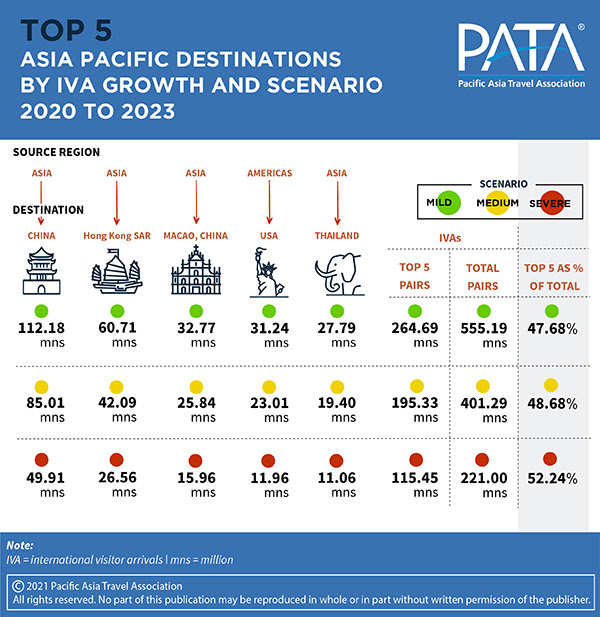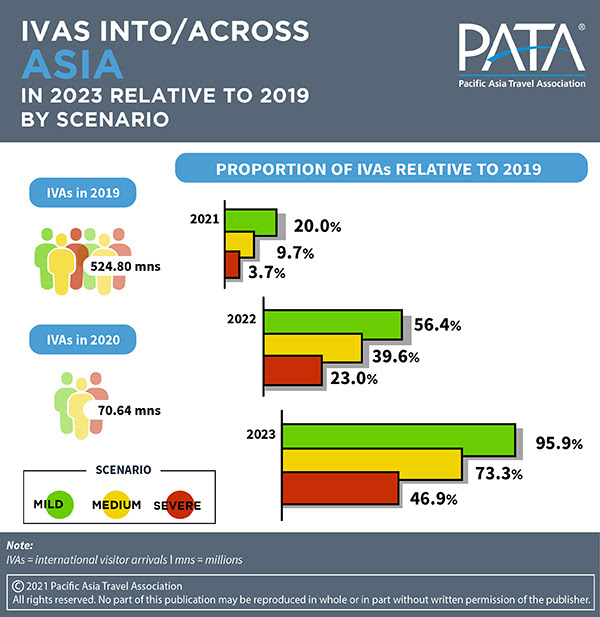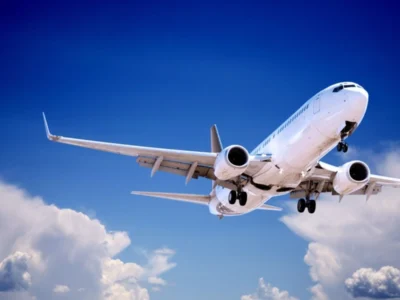The less fortuitous medium and severe scenarios, however, could see those proportions reach just 74 pc and 49 pc respectively, at that time.
This is according to a report on Asia Pacific Visitor Forecasts 2021-2023 released by the Pacific Asia Travel Association (PATA), where three future scenarios for international visitors in the region have been projected, covering mild, medium and severe scenarios.
There is quite a disparity for each of the destination regions of the Asia Pacific as well, with the Pacific, for example projected to exceed the 2019 volume of foreign arrivals into that region by a little over two per cent in 2023. Under the medium scenario, that proportion is expected to reach around 78 pc while under the severe scenario it is likely to remain at just 52 pc of the 2019 volume.
Of immediate concern, for all of the Asia Pacific destination sub-regions under each of the scenarios, 2021 is likely to be another difficult year for international travel movements. Any growth is likely to be extremely uneven, and for some sub-regions may be further below the levels of 2019 and even those of 2020.
South Asia in particular, under this mild scenario, is expected to lose even more IVAs with its relative proportion to 2019, falling to around 14 pc in 2021, before rebounding strongly in 2022 and 2023.
Under the medium scenario, more destination sub-regions are expected to fall into further decline in 2021 relative to 2019, before turning to some tentative recovery in 2022 and 2023.

asia pacific destination scenario
At the destination level, the top five Asia Pacific markets by volume of IVAs received do not change much in order of importance and hold relatively steady positions under each of the scenarios. While there are some rank order changes, these are minimal. In addition, under each scenario, the top five destinations routinely account for more than half of the total IVAs into the region.
Of interest is the finding that China fell from its position of dominance in 2020 but is expected to regain this position from 2021 onwards. Under the severe scenario, this takes a little longer with China returning to the first position in 2022. Similarly, Hong Kong SAR, after falling to the 12th position in the rankings in 2020, is nevertheless expected to return to third place by 2023, irrespective of the scenario.
In addition, this group of the top five destinations becomes more significant in relative terms, in 2021 at least, as the scenarios change from mild to medium and then to severe.
Over the years to 2023 however, this group tends to return to almost pre-COVID-19 relative shares.“Clearly, a further round of belt-tightening will be needed in the international sector, with more innovation being required in developing what is available in the domestic sector. Vaccines are becoming more freely available and inoculations are proceeding rapidly, but even so, and while first results are very encouraging, their effectiveness over a wider proportion of the population has yet to be fully demonstrated. It is very likely that travellers in the future will have to carry proof of inoculation and being Covid-19 free, something that various agencies and airlines have been developing and is already trialling,” Mario Hardy, CEO, PATA stated.






















